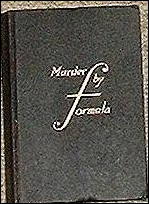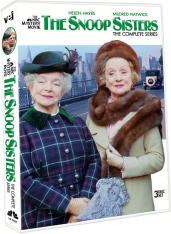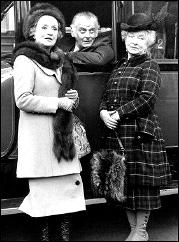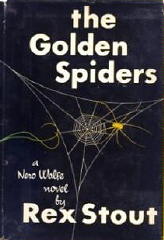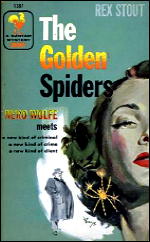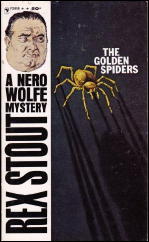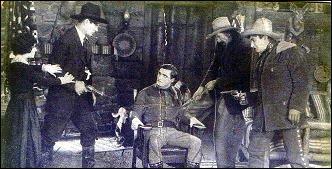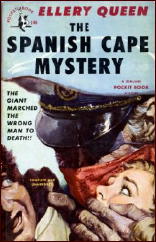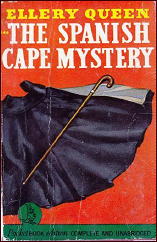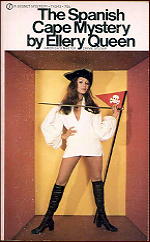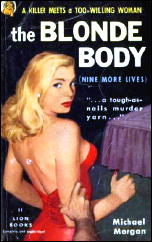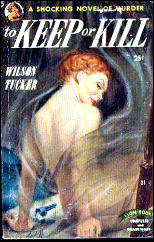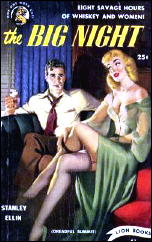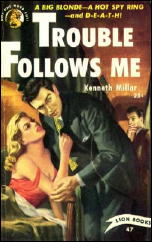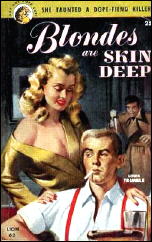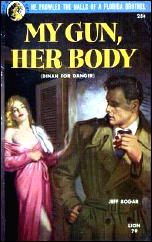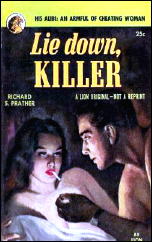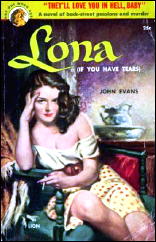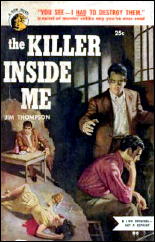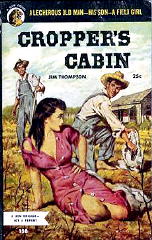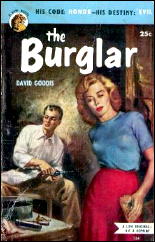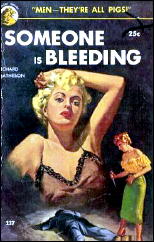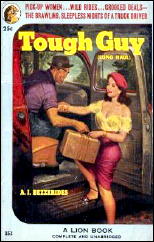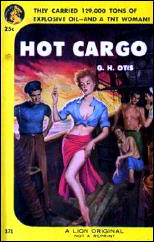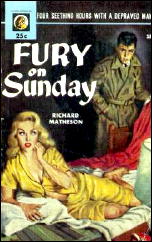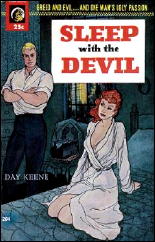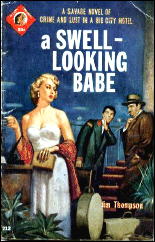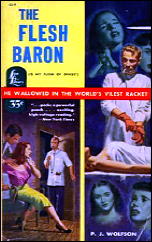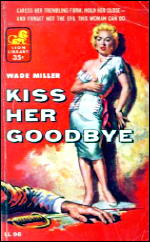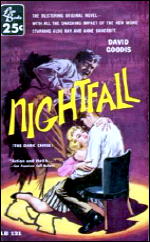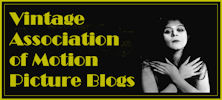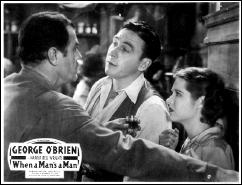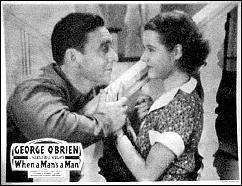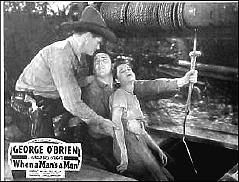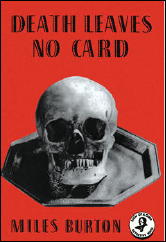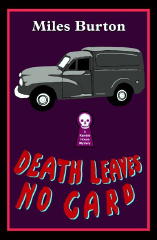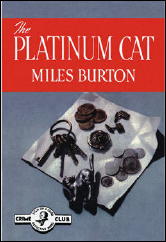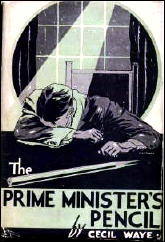MAKE A LIST:
Franchise Players in the Mystery Genre
by Michael Shonk
What is a franchise character? Let’s adapt the word as used in the film business and apply it to books. So our franchise character is any character that has been featured in three or more books. Good golly, look at them all.
A franchise character should be special, unique among the rest, so lets narrow it down a bit. The character must appear in three or more original novels. No comic books, short stories, screenplay adaptations, folklore or ballads. And since this is Mystery*File, we will limit our choices to the mystery genre.
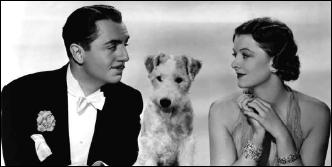
Considering there are countless mystery books series released every month, it is shocking how many of fiction’s most beloved and remembered characters don’t have a book series to his or her name.
Dashiell Hammett’s NICK and NORA CHARLES, the most famous and best of the detective couple appeared in only one novel The Thin Man. There is good news for the two. November 2012, Mysterious Press plans to release Return of the Thin Man, featuring two novellas Hammett wrote to be used as the basis for the movies “After the Thin Man†and “Another Thin Man.†But it is still not enough to make a book series.
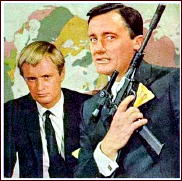
Others who failed to make the list due to a lack of a series of original novels include CONTINENTAL OP, BOSTON BLACKIE, BATMAN, SUPERMAN, CISCO KID, DICK TRACY, and ROBIN HOOD.
Still too many characters for a list, so let’s add films. It is only fair since we stole their word, franchise. Of course in the past, a movie franchise was called, oddly enough, a series. So how can we define a movie series, oops, franchise (and limit our number of characters on the list)? Let’s require three or more original theatrical films shown in America featuring the same studio or independent producer, and/or actor. They must be original films for the movie theatre, doing what Thrush never could do and eliminate MAN FROM U.N.C.L.E. with its films made up of TV episodes.
While there have been several films featuring PHILIP MARLOWE and ZORRO, none were a part of a series of three films featuring the same studio and/or actor. Also off the list are: LEW ARCHER, NERO WOLFE, JOHN J. MALONE, MIKE HAMMER, FLASHGUN CASEY, TRAVIS MCGEE, RAFFLES, FLETCH, and MR AND MRS NORTH.
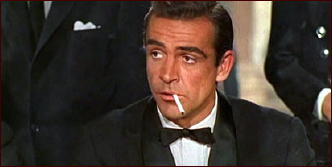
Still too many characters, so let’s add a weekly TV series, a miniseries of three or more episodes, or three or more TV Movies, but no network pilots or foreign productions that have not aired on American TV. You are welcome to add in the comments any, such as the reported PHILO VANCE Italian series, which would restore the character to the list.
A surprising number of popular mystery characters have never had a TV series such as SAM SPADE, THE SHADOW, NICK CARTER, MR. MOTO, BULLDOG DRUMMOND, JAMES BOND, JACK RYAN, JASON BOURNE (only a two part TV movie), and HARRY PALMER (who has only two TV Movies so far).
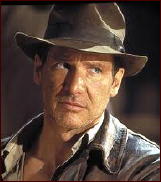
One character will qualify soon, making him lucky number thirteen on our soon to be revealed list. Thomas Harris created HANNIBAL LECTER, the villain with an odd diet, in a series of four books that began with Red Dragon (1981). A famous movie series of four films has followed beginning with Manhunter (1986). Sometime in the upcoming TV season (most likely in 2013) a TV series featuring the serial killer and cannibal will premiere on NBC.
What should we include in the mystery genre? Should we include the action/adventure series of INDIANA JONES and TARZAN? How about horror and JASON VOORHEES from Friday the 13th? All have a series of original books, series of films, and a weekly TV series. I’m not adding them to our list of mystery characters, but feel free to argue in the comments why I should or suggest others.
So who survived? Who can be called a franchise character in all three major formats?
THE LIST OF THE TRIPLE THREAT FRANCHISE CHARACTERS:
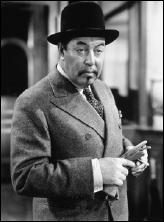
CHARLIE CHAN – Created by Earl Derr Biggers as a minor character in the book House Without a Key (1925) that was serialized in the magazine Saturday Evening Post. Five more books were to follow. CHARLIE has appeared in many films, the first being a ten episode serial from Pathe House, Without a Key (1926), with George Kuwa playing the minor role of CHAN. Fox produced sixteen films between 1931 and 1938 starring Warner Oland. After Oland’s death, Sidney Toler took over the part with eleven for Fox, then eleven more for Monogram Studios. After Toler’s death, Roland Winters took over the Monogram series for six films between 1947 and 1949. J. Carrol Naish played the detective in the syndicated TV series The New Adventures of Charlie Chan (1957 – thirty-nine episode). The character played a minor role in the animated children cartoon featuring Chan’s children solving crimes called The Amazing Chan and the Chan Clan (CBS, 1972). Keye Luke was the voice of CHARLIE CHAN.
http://charliechanfamily.tripod.com
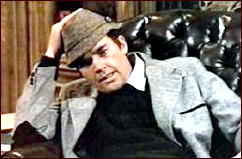
ELLERY QUEEN – Created by “Ellery Queen†(Frederic Dannay and Manfred Lee) in the novel The Roman Hat Mystery (1929), the first in a decades-long book series. Movies have proven unkind to ELLERY, but he was featured in a Columbia film series that lasted seven films, four starring Ralph Bellamy and three with William Gargan. There have been four different TV series featuring the character. The Adventures of Ellery Queen (DuMont, 1950-51; ABC 1951-52) starred Richard Hart then after Hart’s death, Lee Bowman. Adventures of Ellery Queen (Syndication, 1954, thirty-two episodes) starred Hugh Marlowe in the series also called Murder is My Business. The Further Adventures of Ellery Queen (NBC, 1958-59) starred George Nader until the production left New York for Hollywood where Lee Philips took over. Finally (so far), perhaps the best TV adaptation of a traditional mystery detective was Ellery Queen (NBC, 1975-76) starring Jim Hutton.
http://www.elleryqueen.us
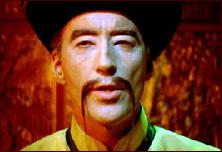
DR. FU MANCHU – Created by Sax Rohmer. The character began in short story “Fu-Manchu,†published October 1912 in the magazine The Story-Teller. A long series of books would follow. Harry Agar Lyons was the first in films to portray the evil Doctor in the silent British movie serial The Mystery of Dr. Fu Manchu (1923). Warner Oland starred in three Paramount films starting with Mysterious Dr Fu Manchu (1929). Better remembered is the film series with Christopher Lee that lasted five films beginning with The Face Of Fu Manchu (1965). Glen Gordon played the role in the syndicated TV series “Adventures of Fu Manchu†(1955 – thirteen episodes).
http://njedge.net/~knapp/FuFrames.htm

HERCULE POIROT – Created by Agatha Christie, the Belgian PI first appeared in The Mysterious Affair at Styles (1916) and lasted thirty-three novels before he met his end in Curtain (1975). Austin Trevor (Alibi, 1931) was the first to play the character in film. Peter Ustinov played the private detective in three theatrical films (Death On the Nile, 1976, Evil Under the Sun, 1982 and Appointment With Death, 1988) and three TV-Movies for Warner Brothers (Thirteen at Dinner, 1985, Dead Man’s Folly, 1986, and Murder in Three Acts, 1986). The most popular portrayal of the character has been by David Suchet who has played POIROT since 1989 for various productions usually seen in the United States on PBS series Mystery.
http://www.poirot.us/poirot.php
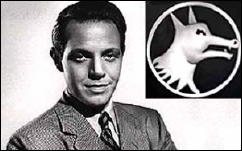
LONE WOLF aka MICHAEL LANYARD – Louis Joseph Vance created the ex-thief turned adventurer that appeared in a series of eight books beginning with The Lone Wolf: A Melodrama (1914). The character first appeared on film in silent movie The Lone Wolf (1917) starring Bert Lytell, who would star in five films, the other four for Columbia. Most of the LONE WOLF films came from Columbia Pictures with Warren William starring in nine and Gerald Mohr in three. The syndicated TV series, The Lone Wolf (also known as Streets of Danger) turned him into a PI. The series starred Louis Hayward and lasted thirty-nine episodes.
http://thrillingdetective.com/lone_wolf.html
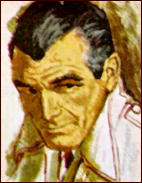
MATT HELM – Created by Donald Hamilton, the government agent appeared in over twenty-five books beginning with Death of a Citizen (1960). MATT HELM changed from tough-guy to campy spy in a movie series of four films starring Dean Martin beginning with The Silencers (1966). In 1975 a TV series starring Tony Franciosa as ex-spy turned PI aired for one season on ABC.
http://thrillingdetective.com/helm_matt.html
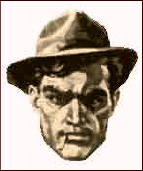
MICHAEL SHAYNE – Created by “Brett Halliday†(David Dresser). The character first appeared in Dividend on Death (1939) and continued in a series of seventy-seven novels. Lloyd Nolan played the red headed PI in a 20th Century Fox film series of seven movies beginning with Michael Shayne, Private Detective (1940). PRC followed with five movies starring Hugh Beaumont. Richard Denning played the PI in a NBC-TV series (1960-61).
http://thrillingdetective.com/shaynemike.html
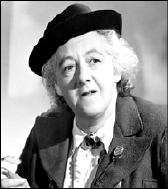
MISS JANE MARPLE – Agatha Christie is the only author with two franchise characters. MISS JANE MARPLE first appeared in Murder at the Vicarage (1930) and would last a total of twelve novels, the final one being Sleeping Murder (1976). Arguably the best of the entire “Little Old Lady†turned detective subgenre. Margaret Rutherford played the character in the popular “Murder†film series for MGM that lasted four films beginning with Murder She Said (1961). The character has PBS to thank for showing the British productions of her TV series starring such actresses as Geraldine McEwan and Julie McKenzie.
http://www.poirot.us/marple.php
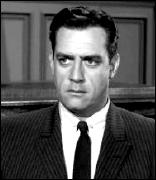
PERRY MASON – Created by Erle Stanley Gardner. The only lawyer on the list, he first appeared in The Case of the Velvet Claws (1933) and continued for eighty-five novels. Warner Brothers film series began with The Case of the Howling Dog (1934) and lasted six films, four starring Warren William. Raymond Burr starred in the CBS TV series that lasted between 1957 through 1966. CBS would bring back the character in New Adventures of Perry Mason (1973-74) with Monte Markham playing the lawyer. In 1985, Raymond Burr would return to star in thirty TV Movies between 1985-1993 (CBS).
https://www.thrillingdetective.com/mason.html
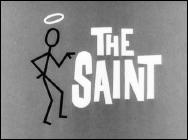
THE SAINT aka SIMON TEMPLAR – Created by Leslie Charteris in Meet–The Tiger! (1928). The former thief turned adventurer Simon Templar has been featured in over ninety books. The character has appeared in many films including an RKO series of eight films with George Sanders starring in five. Two series featuring the character have appeared on America television. The Saint starring Roger Moore began in 1962 on British television and later in syndication to American television stations. In 1966 NBC aired episodes from the series. CBS’s Return Of The Saint starred Ian Ogilvy and ran twenty-four episodes during the 1978-79 season.
http://www.saint.org
http://www.lesliecharteris.com
I have left off one consulting detective and one amateur detective who belong on the list. Can you name who they are? One of the missing is obvious while the other is a surprise. Please use the comments for your answer, as well as other suggestions and comments.
ADDITIONAL SOURCES:
Wikipedia
IMDb.com
http://mikegrost.com
http://www.pbs.org/wgbh/masterpiece/mystery/index.html
ROARING LIONS: A Chronological Bibliography of All Crime Fiction Titles in LION BOOKS and LION LIBRARY
by Josef Hoffmann
Lion Books were published by Martin Goodman. This paperback line lasted from 1949 until 1955 and was edited by the legendary Arnold Hano, an author of western and crime novels and of a classic baseball book.
He promoted Jim Thompson, David Goodis, Robert Bloch, David Karp, Richard Matheson and other very good crime writers by publishing their work as paperback originals. He also promoted a rising star novelist named Kenneth Millar (Ross Macdonald) and other important authors – Stanley Ellin and Gerald Kersh, for example – in paperback reprints.
Although not all crime novelists of Lion Books are in this class Lion Books usually stand for a certain level of writing. Most of the Lion Books are collectible paperbacks with good cover art by Rudolph Belarski, Harry Schaare, Robert Maguire, Robert Stanley, Mort Kunstler and others. Some books are now very pricey.
The publisher established a similar paperback line called Lion Library when Hano left in 1954. It lasted from 1954 until 1957 and published in part the same writers. Finally New American Library purchased Lion Books, Inc.
As I do not own many Lion Books I obtained the information about this paperback line from Jon Warren: The Official Price Guide Paperbacks, House of Collectibles, N. Y. 1991; Gary Lovisi: Antique Trader Collectible Paperback Price Guide, Krause Publications, Iola, WI, 2008.
Which of the Lion Books were crime titles and which were reprints of first editions, I learned from Allen J. Hubin: Crime Fiction IV. A Comprehensive Bibliography, 1749-2000, 2010 Revised Edition, Locus Press.
Warning: If you read too many Lion Books in a short time the simplicity and vulgarity of their vernacular will get on your nerves. There are just too many words like hell, swell, kill, hate, lust, sin, skin, sweat, blood, babe, blonde, dope, jungle etc.
And the emotions of the protagonists are too direct and primitive. You will long for the reflected, differentiated and elegant prose of authors like Chandler, Woolrich or Highsmith. So after a typical Lion Book it is better to read something very different like a humorous detective novel or a historical mystery to be able to enjoy another Lion Book once in a while.
LION BOOKS: (PBO = paperback original)
Morgan, Michael (C. E. Carle/Dean M. Dorn): The Blonde Body (LB 11), 1949; cover art Len Oehman. First edition: Nine More Lives, Random House 1947
Jackson, Shirley: The Lottery (LB 14), 1950; cover art Herman Bischoff. First edition: Farrar 1949 (short stories)
Marsh, Peter: The Devil’s Daughter (LB 16), 1949; cover art William Shoyer. First edition: Swift 1942
Ross, Sam: He Ran All the Way (LB 19), 1950; cover art Harry Schaare. First edition: Farrar 1947
Tucker, Wilson: To Keep or Kill (LB 21), 1950; cover art Herman Bischoff. First edition: Rinehart 1947
Lynch, William: The Intimate Stranger (LB 25), 1950; cover art Woodi. PBO.
Balchin, Nigel: The Small Back Room (LB 31), 1950; cover art Wesley Snyder. First edition: Collins 1943
Jackson, Shirley: The Road Through the Wall (LB 36), 1950; cover art Harvey Kidder. First edition: Farrar 1949
Gray, Russell (Bruno Fischer): The Lustful Ape (LB 38), 1950; cover art Julian Paul. PBO.
Appel, Benjamin: Brain Guy (LB 39), 1950. First edition: Knopf 1934
Ellin, Stanley: The Big Night (LB 41), 1950. First edition: Dreadful Summit, Simon 1948
Eastman, Elizabeth: His Dead Wife (LB 44), 1950. First edition: The Mouse with Red Eyes, Farrar 1948
Tracy, Don: How Sleeps the Beast (LB 45), 1950. First edition: Constable 1937
Millar, Kenneth: Trouble Follows Me (LB 47), 1950. First edition: Dodd 1946
Millar, Kenneth: The Dark Tunnel (LB 48), 1950. First edition: Dodd 1944
Jaediker, Kermit: Tall, Dark and Dead (LB 51), 1951. First edition: Mystery House 1947
Wilhelm, Gale: No Letters for the Dead (LB 52), 1951; cover art Pease. First edition: Random House 1936; reprint: No Nice Girl, Pyramid G-440, 1959
Bordages, Asa: The Glass Lady (LB 56), 1951. First edition: Godwin 1932
Teagle, Mike: Murders in Silk (LB 60), 1951. First edition: Hillman-Curl 1938
Trimble, Louis: Blondes Are Skin Deep (LB 62), 1951. PBO
Keene, Day: My Flesh Is Sweet (LB 68), 1951. PBO
Tracy, Don: The Cheat (LB 69), 1951; cover art Harry Schaare. First edition: Criss-Cross, Vanguard 1934
Bogar, Jeff (Ronald Wills Thomas): The Tigress (LB 72), 1951. First edition: Payoff for Paula, Hamilton & Co. 1951
Durst, Paul: Die, Damn You! (LB 75), 1952. PBO. (Classified as a western by Lovisi.)
Gordon, James: The Lust of Private Cooper (LB 77), 1952. First edition: Of Our Time, Dobson 1946; reprint: Collision, Farrar 1947
Bogar, Jeff (Ronald Wills Thomas): My Gun, Her Body (LB 79), 1952. First edition: Dinah for Danger, Hamilton & Co. 1952
Butler, Gerald: The Lurking Man (LB 81), 1952. First edition: Mad with Much Heart, Jarrolds 1945
Wolfson, P. J.: Bodies Are Dust (LB 83), 1952. First edition: Vanguard 1931
Prather, Richard S.: Lie Down, Killer (LB 85), 1952. PBO
Wills, Thomas (William Ard): You’ll Get Yours (LB 87), 1952. PBO
Lucas, Curtis (William Francis Urell): So Low, So Lonely (LB 91), 1952. PBO
Karp, David: The Big Feeling (LB 93), 1952. PBO
Evans, John (Howard Browne): Lona (LB 94), 1952; cover art Earle Bergey. First edition: If You Have Tears, Mystery House 1947; reprint: The Blonde Dies First, Horwitz 1956
Appel, Benjamin: Hell’s Kitchen (LB 95), 1952. PBO
Kersh, Gerald: Prelude to a Certain Midnight (LB 98), 1952; cover art Rudolph Belarski. First edition: Heinemann 1947
Thompson, Jim: The Killer Inside Me (LB 99), 1952. PBO
Elliott, Bruce: One Is a Lonely Number (LB 100), 1952; cover art Earle Bergey. PBO
Paul, Gene (Paul Conant): Little Killer (LB 104), 1952; cover art Prezio. PBO
Karp, David: The Brotherhood of Velvet (LB 105), 1952. pBO
Thompson, Jim: Cropper’s Cabin (LB 108), 1952. PBO
Eisner, Simon (Cyril M. Kornbluth): The Naked Storm (LB 109), 1952; cover art Robert Skemp. PBO
Ring, Douglas (Richard S. Prather): The Peddler (LB 110), 1952. PBO
Walker, Shel (Walter J. Sheldon): The Man I Killed (LB 112), 1952. PBO
Karp, David: Hardman (LB 119), 1953; cover art Prezio. PBO
Thompson, Jim: Recoil (LB 120), 1953. PBO
Francis, William (William Francis Urell): Don’t Dig Deeper (LB 123), 1953. PBO
Goodis, David: The Burglar (LB 124), 1953. PBO
Thompson, Jim: The Alcoholics (LB 127), 1953. PBO
Otis, G. H.: Bourbon Street (LB 131), 1953. PBO
Karp, David: Cry, Flesh (LB 132), 1953. PBO
Goodis, David: The Dark Chase (LB 133), 1953; cover art Julian Paul. First edition: Nightfall, Messner 1947
Matheson, Richard: Someone Is Bleeding (LB 137), 1953. PBO
Untermeyer, Jr., Walter: Dark the Summer Dies (LB 138), 1953. PBO
Scott, Warwick (Elleston Trevor): Cockpit (LB 140), 1953. First edition: Image in the Dust, Davies 1951
Roueche, Berton: Rooming House (LB 141), 1953. First edition: Black Weather, Reynal 1945
Scott, Warwick (Elleston Trevor): Doomsday (LB 148), 1953. First edition: The Domesday Story, Davies 1952
Thompson, Jim: Bad Boy (LB 149), 1953; cover art Mort Kunstler. PBO
Falstein, Louis: Slaughter Street (LB 151), 1953; cover art Lou Marchetti. PBO
Lorenz, Frederick (Lorenz Heller): A Rage at Sea (LB 152), 1953; cover art Maguire. PBO
Bezzerides, A. I.: Tough Guy (LB 153), 1953. First edition: Long Haul, Carrick 1938; reprint: They Drive by Night, Dell Book 416, 1950
Paul, Gene (Paul Conant): Naked in the Dark (LB 154), 1953. PBO
Thompson, Jim: Savage Night (LB 155), 1953. PBO
Jaediker, Kermit: Hero’s Lust (LB 156), 1953; cover art Lou Marchetti. PBO
Lipsky, Eleazar: The Hoodlum (LB 161), 1953. First edition: The Kiss of Death, Penguin 1947
Curtis, Lucas (William Francis Urell): Angel (LB 162), 1953. PBO
Manners, William: The Big Lure (LB 165), 1953. PBO
Appel, Benjamin: Dock Walloper (LB 166), 1953. PBO
Heatter, Basil: Sailor’s Luck (LB 170), 1953. PBO
Otis, G. H.: Hot Cargo (LB 171), 1953. PBO
Francis, William (William Francis Urell): The Corrupters (LB 174), 1953. PBO
Leiber, Fritz: Conjure Wife (LB 179), 1953; cover art Robert Maguire. First edition: Twayne 1953. (Classified as SF by Lovisi.)
Matheson, Richard: Fury on Sunday (LB 180), 1953. PBO
Thompson, Jim: The Criminal (LB 184), 1953. PBO
Bloch, Robert: The Kidnaper (LB 185), 1954. PBO
Goodis, David: The Blonde on the Street Corner (LB 186), 1954. PBO
Fairman, Paul W.: The Joy Wheel (LB 190), 1954. PBO
Thompson, Jim: The Golden Gizmo (LB 192), 1954. PBO
Lorenz, Frederick (Lorenz Heller): Night Never Ends (LB 193), 1954; cover art Clark Hulings. PBO
Meskil, Paul S.: Sin Pit (LB 198), 1954; PBO
Rosmanith, Olga (Ferney Wood): The Long Thrill (LB 200), 1954. PBO
Thompson, Jim: Roughneck (LB 201), 1954. PBO
Keene, Day: Sleep with the Devil (LB 204), 1954. PBO
Craig, Jonathan: Alley Girl (LB 206), 1954. PBO. Reprint: Renegade Cop, Berkley 1959
Trevor, Elleston: Tiger Street (LB 207), 1954. First edition: Boardman 1951
Keene, Day: Joy House (LB 210), 1954. PBO
Sparkia, Roy Benard: Boss Man (LB 211), 1954. PBO
Thompson, Jim: A Swell-Looking Babe (LB 212), 1954. PBO
Fessier, Michael: Fully Dressed and in His Right Mind (LB 214), 1954. First edition: Knopf 1935
Flora, Fletcher: Strange Sisters (LB 215), 1954. PBO
Cassill, R. V.: Dormitory Women (LB 216), 1954. PBO
Thompson, Jim: A Hell of a Woman (LB 218), 1954. PBO
Manners, William: Wharf Girl (LB 219), 1954. PBO
Davis, Jr., Franklin M., The Naked and the Lost (LB 221), 1954. PBO
Untermeyer, Jr., Walter: Evil Roots (LB 222), 1954. PBO
Lorenz, Frederick (Lorenz Heller): The Savage Chase (LB 223), 1954; cover art Al Rossi. PBO
Goodis, David: Black Friday (LB 224), 1954. PBO
Baldwin, Linton: Sinners’ Game (LB 227), 1954. PBO
Heatter, Basil: Act of Violence (LB 228), 1954; cover art John Leone. PBO
Lipman, Clayre & Michel: House of Evil (LB 231), 1954. PBO
LION LIBRARY:
Frazee, Steve: The Sky Block (LL-3), 1954; cover art Robert Maguire. First edition: Rinehart 1953
Wolfson, P. J.: The Flesh Baron (LL-4), 1955. First edition: Is My Flesh of Brass?, Vanguard 1934
Kennedy, Stetson: Passage to Violence (LL-9), 1954; cover art Al Rossi. PBO
Karp, David: Escape to Nowhere (LL-10), 1955. First edition: One, Vanguard 1953
Rosen, Victor: Dark Plunder (LL-11), 1955; cover art Al Rossi. PBO
Clark, Christopher: The Unleashed Will (LL-15), 1955. First edition: Little 1947
Greene, Graham: Nineteen Stories (LL-31), 1955; cover art Arthur Shilstone. First edition: Heinemann 1947
Walker, David: The Storm and the Silence (LL-33), 1955; cover art George Erickson. First edition: Houghton 1949
Millar, Kenneth: Night Train (LL-40), 1955; cover art Samson Pollen. Reprints LB 47 with new title.
Gordon, James: Collision (LL-41), 1955; cover art Gilbert Fullington. Reprints LB 77 with new title.
Coates, Robert M.: The Night Before Dying (LL-45), 1955; cover art Al Brule. First edition: Wisteria Cottage, Harcourt 1948
Millar, Kenneth: I Die Slowly (LL-52), 1955. Reprints LB 48 with new title
Ross, Sam: He Ran All the Way (LL-59), 1955; cover art George Gross. Reprints LB 19.
Lorenz, Frederick (Lorenz Heller): A Party Every Night (LL-63), 1956; cover art Robert Schultz. PBO
Kauffman, Lane: Kill the Beloved (LL-64), 1956; cover art Charles Copeland. First edition: The Perfectionist, Lippincott 1954
Garland, Rodney (Adam Hegedus): The Heart in Exile (LL-76), 1956; cover art Arthur Shilstone. First edition: Allen 1953
Tucker, Wilson: To Keep or Kill (LL-84), 1956; cover art Robert Maguire. Reprints LB 21.
Karp, David: The Girl on Crown Street (LL-86), 1956. Reprints LB 132 with new title.
Flora, Fletcher: The Brass Bed (LL-87), 1956. PBO
Kent, David: A Knife Is Silent (LL-91), 1956; cover art Mort Kunstler. First edition: Random House 1947
Miller, Wade: Kiss Her Goodbye (LL-96), 1956; cover art Charles Copeland. PBO
Park, Jordan (Cyril M. Kornbluth): Sorority House (LL-97), 1956; cover art Clark Hulings. PBO
Lorenz, Frederick (Lorenz Heller): Ruby (LL-104), 1956; cover art Samson Pollen. PBO
Wilhelm, Gale: Paula (LL-115), 1956; cover art Morgan Kane. Reprints LB 52 with new title.
Appel, Benjamin: Alley Kids (LL-116), 1956; cover art Samson Pollen/Carlos De Mema. Reprints LB 95 with new title.
Tracy, Don: The Cheat (LL-118), 1956; cover art Charles Copeland. Reprints LB 69.
Thompson, Jim: Recoil (LL-124), 1956; cover art Robert Maguire. Reprints LB 120.
Eisner, Simon (Cyril M. Kornbluth): The Naked Storm (LL-125), 1956; cover art Robert Stanley. Reprints LB 109.
Garland, Rodney (Adam Hegedus): The Troubled Midnight (LL-128), 1956; cover art Charles Copeland. First edition: Allen 1954
Wills, Thomas (William Ard): You’ll Get Yours (LL-129), 1956; cover art Harry Schaare. Reprints LB 87.
Goodis, David: Nightfall (LL-131), 1956. Reprints LB 133 with new title.
Roueche, Berton: Rooming House (LL-133), 1957; cover art Arthur Sarnoff. Reprints LB 141.
Williams, Ben Ames: Leave Her to Heaven (LL-136), 1956; cover art Clark Hulings. First edition: Houghton 1944
Hudiburg, Edward: Killer’s Game (LL-137), 1956; cover art Harry Schaare. PBO
Thompson, Jim: A Hell of a Woman (LL-138), 1956; cover art Morgan Kane. Reprints LB 215.
Thompson, Jim: The Kill-Off (LL-142), 1957; cover art William Rose. PBO
Jackson, Charles: Thread of Evil (LL-143), 1957; cover art Lou Marchetti. First edition: The Outer Edges, Rinehart 1948
Lorenz, Frederick (Lorenz Heller): Hot (LL-144), 1956; cover art Rudy Nappi. PBO
Friedman, Stuart: The Bedside Corpse (LL-148), 1957; cover art Robert Stanley. First edition: The Gray Eyes, Abelard 1955
Williams, Ben Ames: A Killer Among Us (LL-149), 1957; cover art Harry Schaare. First edition: The Silver Forest, Dutton 1926
Appel, Benjamin: Brain Guy (LL-151), 1957; cover art Mort Kunstler. Reprints LB 39.
Masur, Harold (ed.): Dolls Are Murder (LL-152), 1957; cover art Mort Kunstler. PBO
Paul, Gene: The Big Make (LL-158), 1957; cover art Robert Maguire. Reprints LB 104 with new title.
Lorenz, Frederick (Lorenz Heller): A Rage at Sea (LL-165), 1957; cover art James Bama. Reprints LB 152.
Roth, Holly: The Sleeper (LL-171), 1957; cover art Rudy Nappi. First edition: Simon 1955
Falstein, Louis: Slaughter Street (LL-172), 1957; cover art Robert Maguire. Reprints LB-151.
Editorial Comment: I wish I had the space to show more of the covers here, but there are many, many more where these came from. Check out Bruce Black’s BookScans website, starting here.
